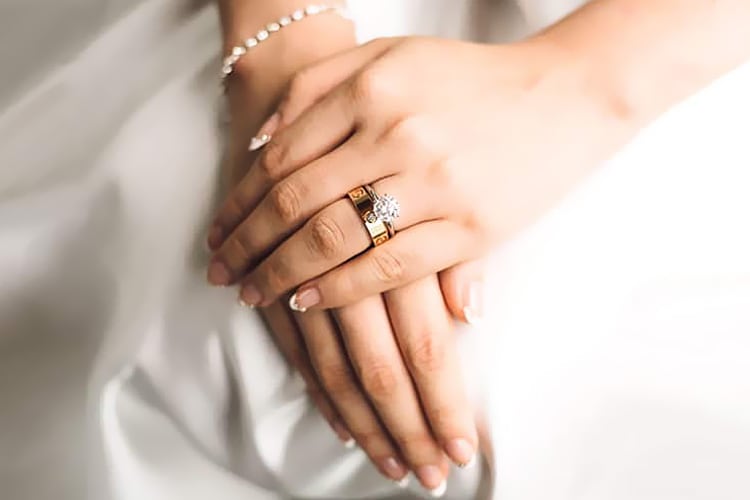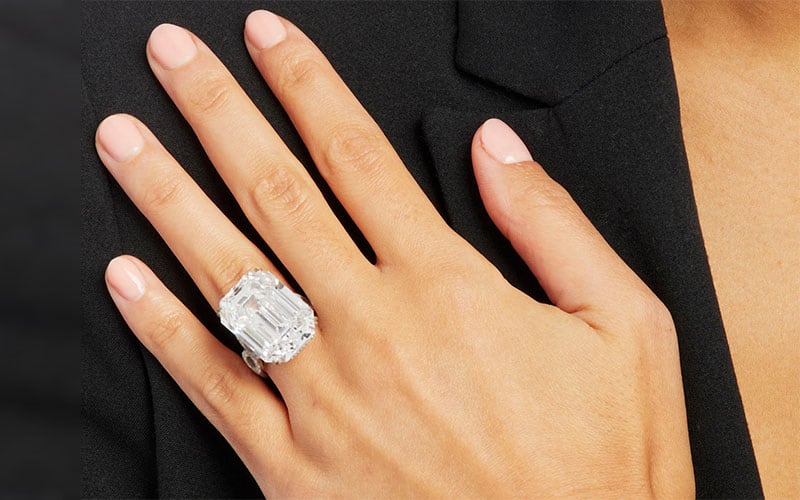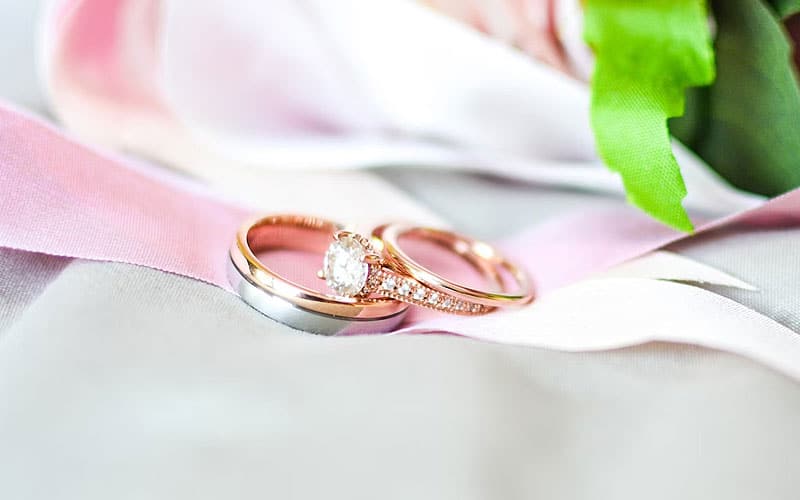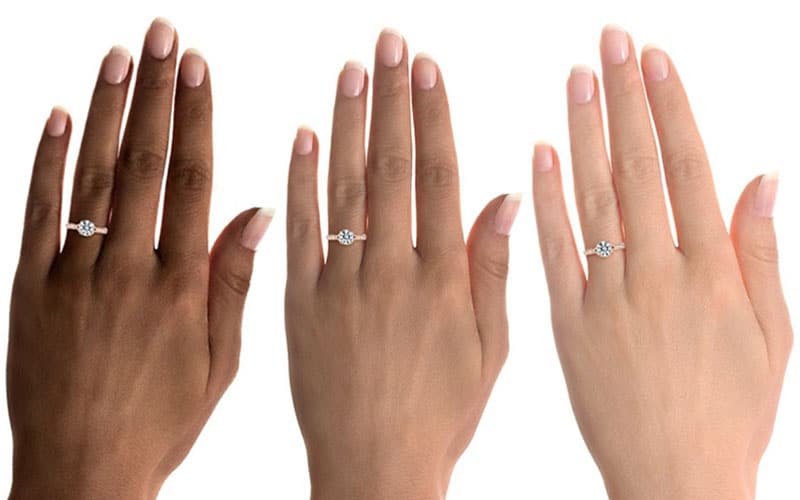Setting Recommendations for D to Z Diamond Colors

Color is one of the most important factors in a diamond’s overall beauty and value. When selecting a setting it’s important to remember that the type of metal used can have a significant impact on how a diamond’s color appears. White, yellow and rose gold settings can all affect how a diamond looks.
Shape Counts Too
Round brilliant diamonds are cut with kite-shaped facets, designed to promote vivid sparkle and contrast. Round diamonds also transmit light more efficiently than any other shape, causing well-cut near-colorless diamonds to ‘face-up’ with even less color than their laboratory color grade.
Recommendations for Round Diamonds
For round brilliants, which enjoy the best sparkle and contrast.
- A white metal setting will cause F color and above to appear extremely bright
- A white metal setting is very complementary to J color and above
- A white metal setting may work for K color which “faces-up” well due to cut-quality
- Yellow metal settings complement G color and below
- Yellow metal settings are very complementary to J color and below
- Yellow metal settings are highly recommended for M color and below
- Rose gold settings work with any color but are highly recommended for brown undertone
Recommendations for Mixed Cuts
For Cushion, Princess, Pear, Oval, Radiant and Marquise Cuts, which also sparkle nicely.
- White metal settings are highly recommended for F color and above
- White metal settings are very complementary to H color and above
- White metal settings might work for I color and J color which “face-up” well due to cut-quality
- Yellow metal settings complement G color and belo
- Yellow metal settings are very complementary to J color and below
- Yellow metal settings are highly recommended for M color and below
- Rose-gold settings work with any color but are highly recommended for brown undertone
Recommendations for Step Cuts
For Emerald, Square Emerald and Asscher cuts, the shape aesthetic is more prominent than than the sparkle.
- White metal settings are highly recommended for F color and above
- White metal settings are very complementary to G color and above
- White metal settings might work for H color and I color which “face-up” well due to cut-quality
- Yellow metal settings complement G color and below
- Yellow metal settings are very complementary to J color and below
- Yellow metal settings are highly recommended for M color and below
- Rose-gold settings work for any color but are highly recommended for brown undertone

Credit: Bonhams
Rose Gold
Note that rose gold settings can make a diamond look slightly pinker. This is because the warm, coppery tones in the gold can reflect within the diamond, creating a rosy glow. This effect is subtle, but it can be quite beautiful, especially with diamonds that have a hint of brown in them.

Credit: SYNG on Unsplash
Skin Tone
Always keep personal preferences in mind when it comes to setting color and skin tone. The recommendations above are provided as general guidelines, but every person is different. Many jewelry lovers select the color of their setting based on what they feel works best with their complexion.

Credit: Joseph Jewelry
In conclusion, when choosing a setting for your diamond, it’s important to consider how the color will affect the appearance of the stone. White gold can make colorless diamonds look extremely bright, yellow gold can make near-colorless diamonds appear more white, and rose gold works for any color, especially those with brown undertone. By choosing a setting that complements your diamond’s color, you can enhance its beauty and bring out its best qualities.
Source: International Gemological Institute